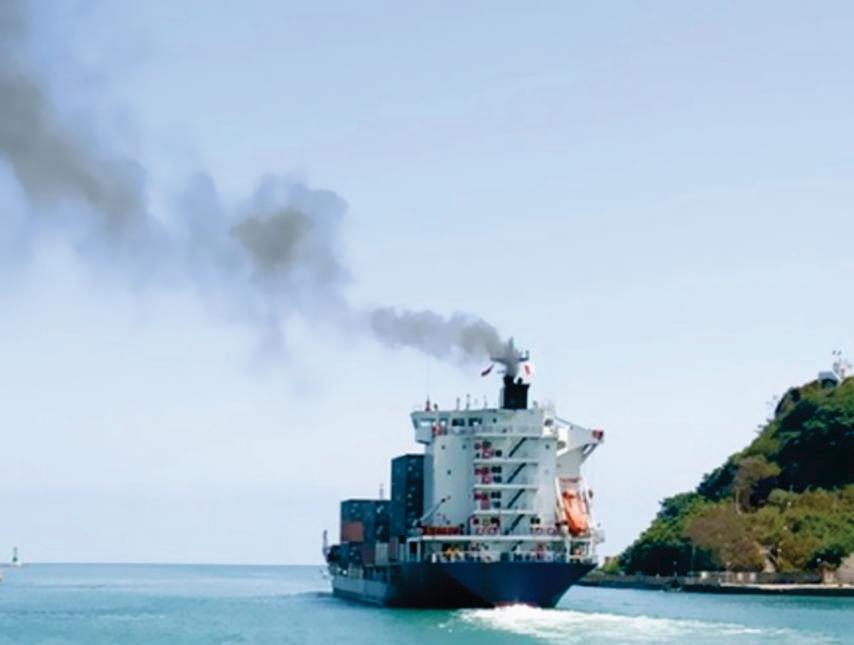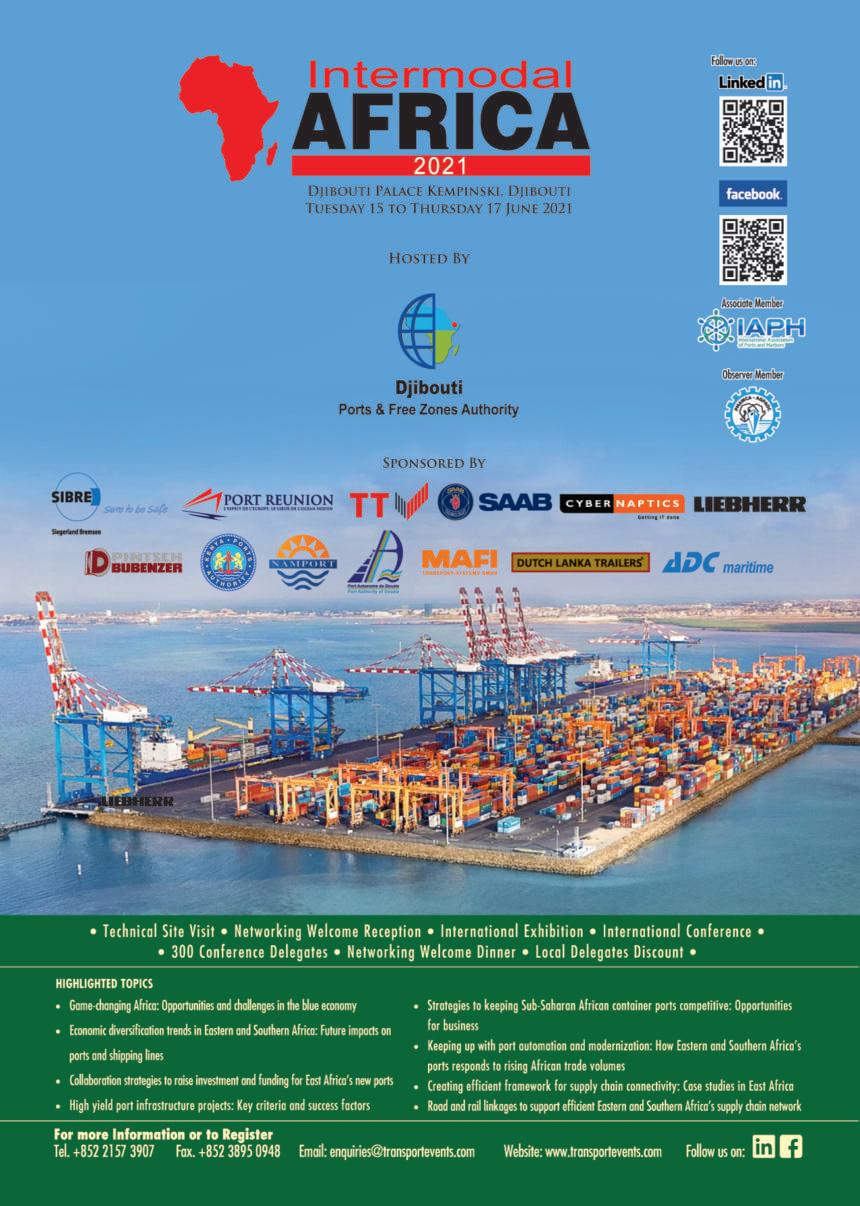
14 minute read
ANNIVERSARY
NCTTCA 35th ANNIVERSARY
NCTTCA Makes Major Strides 35 Years On
Advertisement
he Northern Corridor Transit TTransport Coordination Authority (NCTTCA) has made tremendous gains and enhanced cooperation among the Member States of Burundi, Democratic Republic of Congo, Kenya, Rwanda, Uganda and South Sudan, since its inception 35 years ago. The Authority was established in 1985 through a treaty known as the Northern Corridor Transit and Transport Agreement (NCTTA). It was ratified in 1986.The Agreement which was reviewed in 1996 and 2007 and later accented by South Sudan in 2012 has 11 protocols aimed at fostering cooperation and facilitating interstate and transit trade among the Member States. The Authority has a permanent secretariat headquartered in Mombasa, Kenya.Among the milestones made by the Authority include elimination of multiple security bonds and multiple customs declarations; Creation of implementing institutions in Member States such as Road Authorities, Road Maintenance Funds, National Road Safety Authorities and Revenue Authorities. It has equally interfaced Customs Systems andestablishedjoint verification of multiple Customs documents; besides introducing High Speed-WeighIn-Motion Systems to reduce multiple weighbridges along the corridor. The Northern Corridor has also focused on the decongestion of Mombasa Port by streamlining and automating the procedures and operations; and domesticating some RECs polices such as the implementation and effective monitoring of EAC Vehicle Load Control (VLC) and some COMESA Trade Facilitation Instruments. It has similarly harmonised National Customs Laws and Instruments. Additionally, the Authority has initiated the implementation of a number of initiatives that have revolutionised the efficiency and performance of the corridor.These include -The Single Customs Declaration Document;The Single Customs Territory (SCT);The Transport Observatory with its GIS component - online monitoring tool which measures the performance of the Northern Corridor Vis-a-Vis set targets; Monitoring the implementation of the Mombasa Port and Northern Corridor Charter; Monitoring the implementation of the Vehicle Load Control (VLC) Charter and its Communication Strategy. The Sustainable Green Freight Transport Programme along the corridor has also been drawn;
COVER STORYNCTTCA 35th ANNIVERSARY
besides the establishment of the Roadside Stations Programme.Also established is the Regional Electronic Cargo Tracking System;The One Stop Border Posts (OSBPs) initiatives - 23 of which have been identified between the six member states; and The Implementation of COMESA Trade Facilitation Instruments. According to Omae Nyarandi, the Executive Secretary of the NCTTCA, the Secretariat with the direction of the Northern Corridor Policy Organs, has continued to transform the Corridor into an efficient, smart and a green Corridor. He noted that key to the transformation is advocacy for full automation of systems and processes and interfacing systems; infrastructure development; and simplification of processes to reduce barriers to transport and trade. Also to be undertaken is the harmonisation of transport and traderelated policies and infrastructure; and implementation of green freight programme to make the Corridor environmental-friendly and safe. On the Single Customs Territory (SCT) the Authority established in 2014, Mr Nyarandi said it had reduced the cost of doing business by eliminating duplication of processes; and equally reduced administration costs, regulatory requirements and the risks associated with noncompliance on the transit of goods, as taxes are paid at the first point of entry for all the Partner States. “Before COVID-19 outbreak, most oneStop Border Posts, being one of the SCT initiatives, had recorded a reduction in clearance and transit time at the borders leading to effective use of available resources and assets at a lower cost.The average time taken to clear a truck was between five to 10 minutes compared to the previous two to three days, the turnaround time of goods from Mombasa to Kampala had reduced from 18 days to four, and goods from Mombasa to Kigali, from 21 days to six.The time and cost of transporting goods from the ports of Dar es Salaam and Mombasa had reduced from 21 days and 18 days to seven and four days, respectively,” he said. According to Mr. Nyarandi, the Authority has since 2017 undertook activities towards implementing the Green Freight initiatives to reduce greenhouse gas (GHG) and particulate matter emissions along the corridor. The initiatives, he said, include sensitisation of stakeholders to create awareness of the effects of GHG emissions, development of a Green Freight Programme for the corridor and establishing baseline data on emissions at Mombasa Port. “In July 2019,Trade Mark East Africa (TMEA) in collaboration with NCTTCA and Central Corridor commissioned a study dubbed 'Greenhouse Gas Inventory for the Northern and Central Corridors' with the aim to identify total Greenhouse Gas (GHG) emissions along main routes in both corridors and explore some climate mitigation projects to be prioritised to reduce the GHG emissions, ” he said. Speaking on Mombasa Port and Northern Corridor Community Charter which was introduced by in 2014 by Mombasa Port stakeholders and reviewed in 2018, Mr Nyarandi said the Charter was a critical framework for enhancing the efficiency, effectiveness, reliability and global competitiveness of the Port of Mombasa and the Corridor. He noted that the Charter is a multistakeholder institutional mechanism to enable discussions, negotiations and joint planning between stakeholders from the port and corridor community. Adding that it aims to provide a space in which stakeholders can share and discuss their interests and coordinate their activities; and to contribute to a sustainable performance and development of the Mombasa Port and the corridor. The implementation of the Charter, he said, had seen transport and logistical inefficiencies addressed, ranging from infrastructure to systems and processes and that through the Charter, the region has witnessed enhanced efficiency of the Port of Mombasa and expansion of the container terminals at the port; Faster clearance of goods with the implementation of the Single Customs Territory (SCT) across the region;
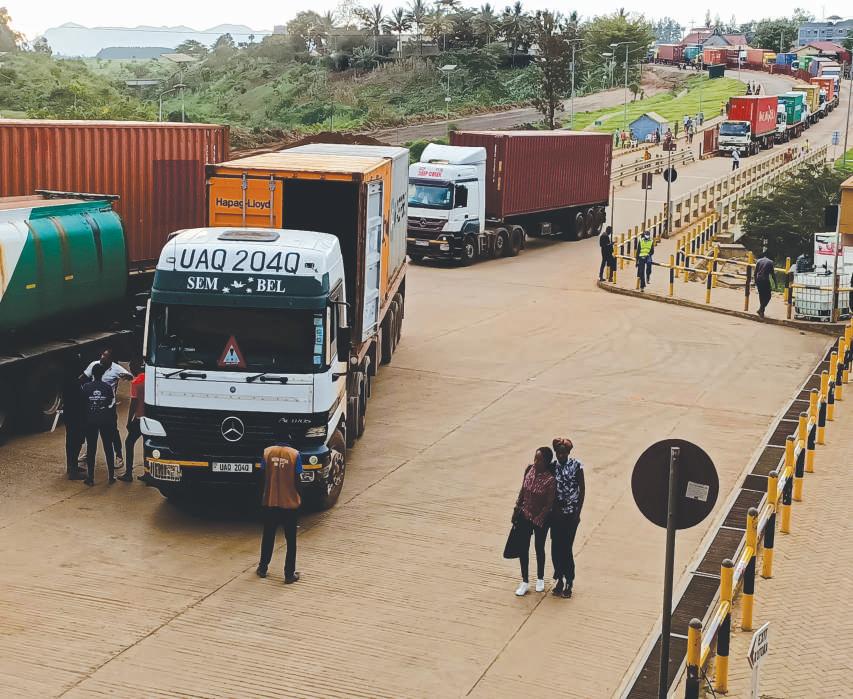
ISCOS
ISCOS
Inter-govemmental Standing Committee on Shipping
ISCOS CONGRATULATES NCTTCA ON ITS 35TH ANNIVERSSARY
The Inter-Governmental Standing Committee on Shipping (ISCOS) congratulates the Northern Corridor Transit Transport Coordination Authority (NCTTCA) on her 35th Anniversary. ISCOS acknowledges the great milestones NCTTCA has attained since its inception in 1985 in the line of facilitating the movement of goods and people along the Northern Corridor
To complement regional efforts of enhancing the seamless flow of cargo to and from the region, ISCOS has developed an Information and Support Platform for Shipping and Freight Logistics dubbed “ISCOS Shipplinc”, to facilitate real-time reporting, monitoring, and resolving NTBs, continuous sharing of information, and the provision of information and Support to shippers on regular basis.The provision of Support to shippers as they move their cargo along the Surface and Maritime transit routes is central in ISCOS' activities.
The Shipplinc APP can freely be downloaded by Android and iPhone operating systems.
ISCOS, formed in 1967 by the Member States of Kenya,Tanzania, Uganda, and Zambia and now expanding to the rest of the Eastern, Central and Southern Africa takes care of the Shipping and Maritime interest of the region. In fulfillment of its mandate, and the recognition of the international nature of Shipping and Freight Logistics, ISCOS works and collaborates with a wide range of Stakeholders both regionally and internationally. The NCTTCA is one of ISCOS' valuable partners.
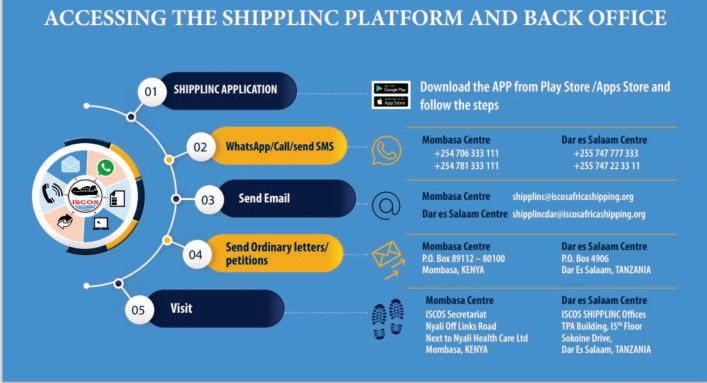

NCTTCA 35th ANNIVERSARY
Development of the Standard Gauge Railway in Kenya and Inland Container Depots (ICDs) in Kenya, Rwanda and Uganda increasing the uptake of cargo into the region. On road transport safety, Mr. Nyarandi said the European Union was working with different stakeholders within the Northern Corridor through TradeMark East Africa (TMEA) and Member States to ensure the same, noting that the EU was contributing to the funding of the Northern Corridor Transport Observatory. He said safety promotion along the corridor was being carried out and that safety Indicators had enabled NCTTCA to map out black spots along the corridor and lobby Institutions in member states to consider ways of improving road safety. In regard to inland waterways, Mr. Nyarandi noted that these were crucial part of the transport systems in the region that could potentially reduce distances and costs of transport while connecting various countries. He cited the main waterways along the corridor as - Lake Victoria with Kisumu (Kenya), Port Bell and Jinja (Uganda) ports; Lake Tanganyika with Bujumbura (Burundi) as the main port; and River Nile for South Sudan. The Secretariat through the Transport Observatory, he said, advocates for joint efforts by Member States to address the challenges that face transportation through the inland waterways. He cited the challenges as including: poor o p e r a t i n g s y s t e m s , i n s u f fi c i e n t equipment, shallow channels, water hyacinth and narrow berths that inhibit navigation and docking. T h e A u t h o r i t y, h e s a i d , h a d specificallyadvocated for reopening of Kisumu-Jinja-Port Bell waterway to boost trade between Kisumu and Jinja; whereas in Kisumu, the government of Kenya had refurbished the Kisumu oil jetty and Kisumu Port that will create an intermodal transport to Uganda. On transit time within the corridor, he said, the Corridor's Observatory tracks transit time from Mombasa to various destinations as well as from one border to another border station or transit mode along the corridor using electronic data source including customs business systems, Region Electronic Cargo Tracking System (RECTS) - connecting Kenya, Rwanda and Uganda, and Road Survey results. Commenting on Port performance, he noted that under the Mombasa Port and Northern Corridor Community Charter,the NCTTCA was mandated to monitor the performance of the Port and the Northern Corridor. He stated that data driven trade facilitation generated in form of weekly, monthly,quarterly and bi-annual reports by the Northern Corridor Transport Observatory from raw data provided by stakeholders, enhanced efficiency of the port and expansion of container terminals at the port and have led to increased throughput. “Additionally,informed policies and decision from reliable data had enabled the improvement of infrastructure and reduction of Non-Tariff barriers to transport and trade,and led to enhanced efficiency of the corridor, ” he said. In regard to the impact of the Standard Gauge Railway (SGR) on the Corridor, he noted that the SGR which is 609 km from Mombasa to Nairobi and 120kms from Nairobi to Naivashawas designed to carry a capacity of 22 million tonnes a year. He said the SGR connected the Port of Mombasa to the ICDs (Inland Container Depots) in Nairobi and Naivasha and that with its full operationalisation, the volume of exports and imports to and from the region through the Nairobi ICD increased by 62% from 257,972 TEUs in 2018 to 418,760 TEUs in 2019. Additionally, he said, the SGR had reduced the distance for collection of goods by over 600kms and by extension reduced the turnaround time. “With less bulky cargo being hauled by rail, the road infrastructure is expected to experience reduced wear and tear.The SGR is projected to take 40% of the Mombasa Port throughput by December 2035,” he noted. On the implementation of the Roadside Stations (RSS) programme along the corridor, he said, the initiative started in 2014 when Nor thern Corridor Secretariat got support from Trade Mark East Africa (TMEA) to carry out regional feasibility study to the effect. Consequently, he said, a joint team comprising experts from the Northern Corridor Secretariat and road authorities from member states led by the TMEA Consultant conducted a feasibility study to map up suitable locations for the RSS.
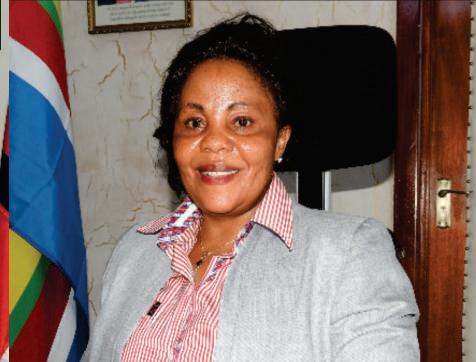
Dr. Margaret Mwakima, Principal Secretary State Department of Regional and Northern Corridor Development Chairperson of the Executive Council
COVER STORYNCTTCA 35th ANNIVERSARY

Mr.Adan Mohamed CBS, Cabinet Secretary for East African Community and Regional Development and Chairman of the Northern Corridor Council of Ministers.
“The final report of the feasibility study was adopted by stakeholders from all the Northern Corridor Member States through validation workshops. Generally, the feasibility study identified 141 locations for RSS out of which 67 were considered as priority locations.Within the Kenyan section of the Northern Corridor route,out of the 67 priorities 22 RSS locations were identified,” he said. Commenting on gains made in regard to theAfrican Continental Free Trade Area (AfCFTA) which came into force on May 30, 2019,and meant to create a single continental market for goods and services to boost intra-Africa trade, Mr. Nyarandi observed that AfCFTA seeks to eliminate tariff and non-tariff barriers thus allowing access into the rapidly growing markets both within the region and throughout Africa. He added that so far, the African Union was seeking to tackle non-tariff barriers by advocating for small businesses' use of the tradebarriers.africatool, a new online non-tariff barrier reporting platform, developed in partnership with United Nations Conference on Trade and Development (UNCTAD). In regard to Public Private Partnership (PPP) as one of the key initiatives of NCTTCA for the regional transport infrastructure to cope with the rising regional trade volumes, Mr. Nyarandi noted thatArticle 8 (d) of the Northern Corridor Transit and Transpor t Agreement provides for a Public Private Par tnership Committee (PPPC) composed of public and private sector stakeholders dealing with matters of trade and transport along the Northern Corridor. “The Policy Organs resolved to have members of the Private sector represented in the Northern Corridor Executive Committee which enabled the private sector to increase the voice in the transport corridor development and work with public sector on issues affecting doing business in the region.In the six Member States,there is a Public and Pr ivate par tner ship frameworks enabling Governments to increase private investment in the infrastructure market across sectors and sustain this participation over an extended period of time, ” he added. He cited as a best practice to the effect, that the Government of Kenya had listed in the national priority list of PPP projects worth 1.14 trillion,with plans to roll them out by June 2021. On the impact of COVID-19 on the supply chain within the region, Mr. Nyarandi said the Secretariat undertook some initiatives and interventions to advocate for keeping cross border trade and transport open and equally raise awareness on curbing the spread of COVID-19 infections. He added:“The NCTTCA Secretariat put in place a regional platform for weekly virtual meetings with Nor thern Corr idor Stakeholders which mainly focused on what was happening in real time in each Member State in general and in particular at each transit or transport mode along the Corridor (Port,Weighbridges, Border Posts, ICDs, and Transit ParkingYards). M r. N y a r a n d i r e v e a l e d a l s o thatStakeholders were 24/7 in contact through a WhatsApp Group created for quick interventions in their areas of operations. Additionally, the Northern Corridor Secretariat, in collaboration with the Ministry of East Africa Community and Regional Development, Republic of Kenya, carried out sustained sensitisation Campaign against the Spread of COVID-19 and Stigmatisation along the Northern Corridor where the Authority contributed ten thousand masks and Reflector jackets to cross border Truck Drivers.
The final report of the feasibility study was adopted by stakeholders from all the Northern Corridor Member States through validation workshops. Generally, the feasibility study identified 141 locations for RSS out of which 67 were considered as priority locations.Within the Kenyan section of the Northern Corridor route, out of the 67 priorities 22 RSS locations were identified - Mr Nyarandi
NCTTCA 35th ANNIVERSARY
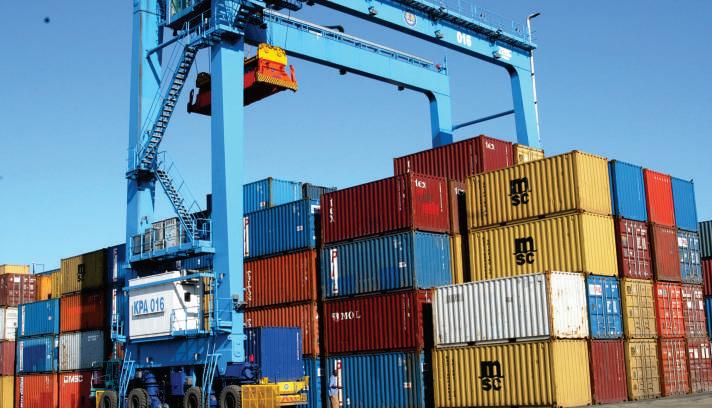
The Port of Mombasa which marks the beginning of the Northern Corridor, the main artery of Eastern Africa trade.
The Northern Corridor Road and Rail Networks across the Six Eastern Africa member states.
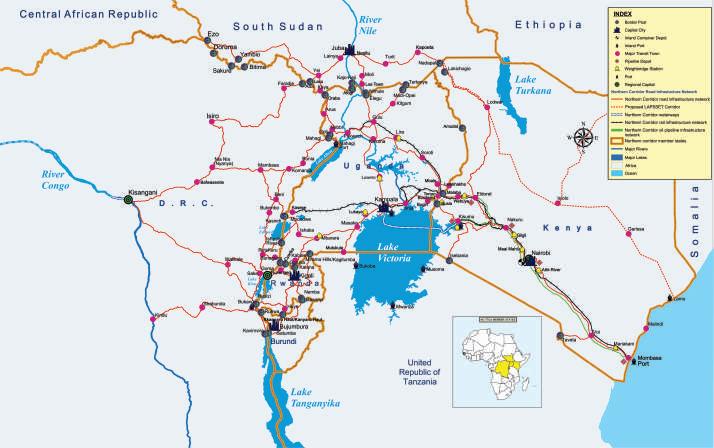

NCTTCA 35th ANNIVERSARY

From left to right: Mr. Omae Nyarandi, the Executive Secretary NCTTCA, Hon.Adan Mohamed CBS, Cabinet Secretary for East African Community and Regional Development and Chairman of the Northern Corridor Council of Ministers, Mr.Aloys Rusagara, NCTTCA Director Transport, Policy and Planning, Mr. Dennis Ombok, CEO Kenya Transporters Association and Dr. Margaret Mwakima, Principal Secretary State Department of Regional and Northern Corridor Development Chairperson of the Executive Council during a recent tour to inspect facilities and the state of the corridor.


TradeMark East Africa (TMEA) Congratulates the Northern Corridor Transit & Transport Coordinaon Authority (NCTTCA) on the auspicious th occasion marking its 35 Anniversary. NCTTCA has been an important partner for TMEA for the last one decade in fostering trade in the region. We appreciate the significant role NCTTCA has played in the advancement of trade, regional economies and the lives of the larger East and Central African region. TMEA wishes the NCTTCA a great future as it connues to coordinate development and modernisaon of this crical corridor.


